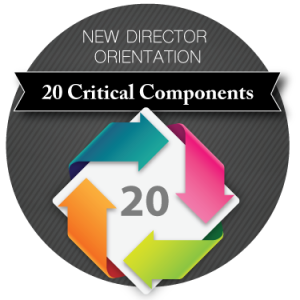Board development is critical for building (and maintaining) a high-functioning board.
Year after year, best-in-class nonprofit organizations have an amazing impact in their communities. Their boards have directors who understand the agency’s mission, are fully engaged in the board’s work, and have embraced their specific role serving on the board. Among other success factors, these nonprofits are led by boards with committed directors who:
- Understand their role within the board leadership team.
- Were carefully and specifically selected for the board.
- Receive proper new director orientation and periodic refresher training.
Agencies that consistently underperform are almost always led by weak boards — boards with little understanding of their role— or those that were assembled with little planning or forethought.
So how can you create and keep an effective board?
It requires an ongoing effort to ensure your board operates at top effectiveness. A Board Development, or Board Governance Committee can be the critical connection between a lack-luster board, and the board you need to drive your organization forward.
Many nonprofit agencies recognize the importance of having a high-functioning and engaged board. With Executive Committees already having plenty on their plates, they often ask a few of their most respected directors to serve on the Board Development or Governance Committee — to attend to the health and effectiveness of the entire board. (In some cases, the roles of these two committees are a little different but they share about 90% of the same duties. For the purpose of this article, we will focus on the Board Development Committee, but many of these points can apply almost equally to both.)
Who should be on your Board Development Committee?
Ideally, these committee members will have significant past experience serving on nonprofit boards, with a variety of other agencies. It’s also helpful if they have served in multiple board roles in the past so they can bring a wide-range of experience to committee discussions.
Past board chairs often make excellent members of this committee. Even past board members who may no longer be on the board should be considered for service.
What does the Board Development Committee do?
This specific group is charged with identifying, vetting, and recruiting new director candidates, and then providing orientation and training for new directors and as-needed refresher training for the rest of the board.
In its role, this committee uses the agency’s mission, values and strategic plan as guides to determine who best can help the agency accomplish its mission, and then to lead the vetting process.
Much of this important work is done by committee members but it does rely heavily on the other board directors to assist in identifying potential candidates and then determining their suitability and “fit” on the board.
To develop new director orientation as well as periodic board training, the Board Development Committee determines what subject matter shortcomings the new members — as well as the entire board — have and then works to develop training to shore up those areas.
Many organizations leave board development to chance — hoping their board members will “just know” what to do, and “figure out” how to best guide and help the organization. This can be a recipe for disaster. An effective board of directors can be one of the most powerful tools for a nonprofit, but they can also be the weakest link. Are you willing to take that chance with your agency?



Tom, I love the way you take subtle nuances about effective board governance and expand on them to show the value of such. Great article. You are a great resource to non profit boards that want to ‘up their game’. Thank you. Jim
Thanks, Jim. I’m glad you found it useful.